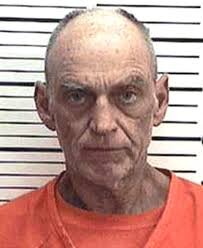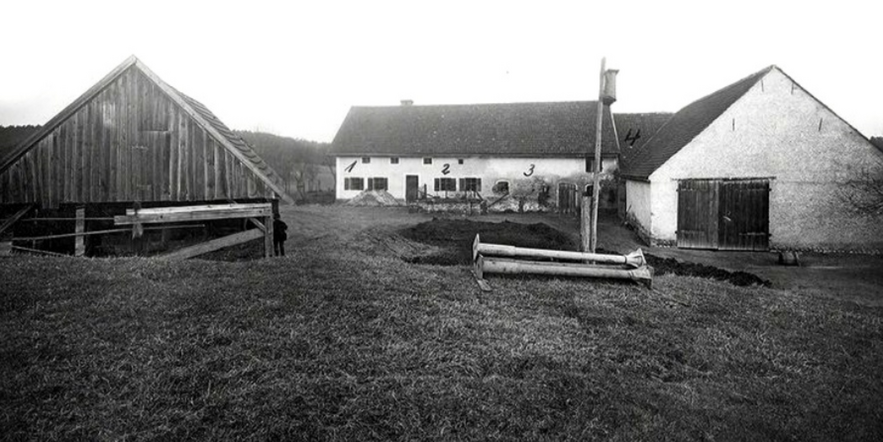The disappearance of Peter Falconio in the Australian Outback
Peter Falconio, disappeared Stuart Highway near Barrow Creek, Northern Territory, Australia, July 14, 2001. Body never found.
Revised November 2024
Background to the Barrow Creek Incident
Peter Marco Falconio (born 20 September 1972) was the third of four sons in a family who lived in Hepworth, West Yorkshire, in the north of England.
In 1996, he started a relationship with Joanne Lees (born 1973) after meeting her in a local nightclub. The following year, she began living with him in Brighton. Peter was studying at Brighton University.
Joanne Lees and Peter Falconio
Joanne’s father is Australian, but her English mother raised her. She has an Australian sister, Jess, whom she only met for the first time in 2016.
On 15 November 2000, the couple left the U.K. for a trip to Nepal, Singapore, Malaysia, Thailand, Cambodia, and finally Australia. On January 16, 2001, the couple arrived in Sydney on a working holiday visa, and on 25 June, they departed on a road trip which included traveling from Sydney to Canberra, Melbourne, Adelaide, Darwin, and finally, Brisbane.
Trip near Barrow Creek
Falconio and Lees Kombi van
Around 7.30 pm on Saturday, July 14, 2001, Falconio and Lees were traveling on the Stuart Highway to the Devil's Marbles in their orange VW Kombi van. “Kombi” comes from the German word Kombinationskraftwagen, meaning combination motor vehicle, with side windows and removable rear seats, combined with a passenger and a cargo vehicle.
They passed through the area near Barrow Creek, a tiny town with a current population of 11 in the southern Northern Territory of Australia. It is located about 280 km north of Alice Springs, about halfway between there and Tennant Creek. The main attraction is the roadhouse/hotel.
Barrow Creek was central to the last major Aboriginal massacre in the Northern Territory. In the 1920s, Mounted Constable William George Murray was in charge of the local police station and also the Chief Protector of Aborigines in the area. When an old dingo trapper, Fred Brooks, was killed by Aborigines on Coniston Station, Murray led a posse that killed an estimated 70 Aborigines in a series of bloody reprisals.
When Murray was called to Darwin to explain his actions, he was greeted as a conquering hero. When asked why he had taken no prisoners, he expressed the racist attitudes which prevailed at the time by telling the Darwin court, "What use is a wounded black feller a hundred miles from civilization?" He was acquitted of all charges.
The attack
Barrow Creek Hotel and Roadhouse
Peter and Jo had been conscious of a car following them since they stopped at the roadhouse in Barrow Creek around 13 miles away and expected to be overtaken. However, when the white Toyota 4WD with a green canopy drew alongside, the driver gestured at them to pull over.
Peter stopped the van, despite Joanne’s misgivings, and went to speak with the man, who had pulled off the road ahead of them. The man explained that sparks were shooting out of the van's exhaust.
The two men went to the rear of the Kombi to investigate, and Joanne moved into the driver's seat, ready to rev the engine. She then reportedly heard a loud bang from the rear of the van, and moments later, the man was at the window pointing a silver gun at her. He climbed into the van, and he secured her hands behind her back with black cable ties but fought the tying of her feet and taping of her mouth.
Joanne was then dragged to the man's vehicle, which had a brown dog in it, but fearing rape, she fled into the bush while he was distracted (apparently while moving Falconio's body). The man searched for her for some time before leaving, passing nearby three times.
At 12:35 a.m., she flagged down a road train being driven at some speed by Vince Millar, who took her back to Barrow Creek Roadhouse and called the police.
Truck driver Vince Millar
Just before he found Joanne on the highway, Millar says, he noticed a parked red car and two men holding up a third beside it. “I saw this bloke who looked like jelly,” he recalls. “He was in the middle of two blokes.” He pulled over and asked if they were all right, but they got into the car and sped off. “I’m pretty sure that the bloke in the middle was Peter Falconio.” If so, then, just possibly, Falconio survived his murder. Millar also said he saw a pair of headlamps circling in the distance before Lees was picked up.
Millar and his co-driver cleaned up Joanne changed her clothes and removed the handcuffs. They said she was visibly shaken and scared.
The investigation
The Alice Springs Police were called around 1.30 am, arrived to collect evidence and testimonies at around 4.20 am, and (accompanied by the truck driver) commenced a search for Falconio, the vehicle, and the gunman at 7.00 am.
When the police returned to the scene of the attack, they found a blood pool on the edge of the highway and the Kombi hidden some 80 meters into the scrub.
But roadblocks were not placed on the twelve likely roads exiting the district until eight hours after Joanne's rescue.
Police searches of the area revealed little except Lees' footprints, but four Aboriginal trackers arrived from a nearby settlement within a few days. However, none of them found evidence of either Falconio or the attacker, which appeared strange at the time and raised some suspicions amongst the searchers.
Given the unusual nature of the attack and the lack of corroborating evidence, it took the police some days to appreciate the significance of the crime. The media quickly sensationalized Joanne Lee’s story as one of survival in a crime of unusual horror against all odds. A $250,000 reward was offered.
However, inconsistencies in her statements and her interaction with the media in the following weeks shifted attention to the authenticity of her version of the incident.
In February 2002, six months after Falconio’s disappearance, Colleen Gwynne was promoted to superintendent, head of crime in Alice Springs, taking over the investigation.
Colleen Gwynne
CCTV evidence
Police were hopeful that releasing CCTV footage from a gas station near Alice Springs would lead to the person shown coming forward to remove themselves from suspicion. When this did not happen, investigators focused on the registered owners of the 1991-1999 model Toyota Land Cruiser 4WD identified and on the 36 men whom callers had identified in the footage.
Bradley Murdoch CCTV footage
Bradley John Murdoch arrest
Bradley John Murdoch
Based on these results, police interviewed Bradley John Murdoch in Broome on November 1, 2001, though Lees' descriptions did not immediately connect the case to him, and no DNA sample was collected. On 17 May 2002, the investigating task force caught Murdoch's drug-running accomplice, who began to relate details of his connections to the case, and a DNA examination of Murdoch's brother also supported his involvement. Murdoch then disappeared, but on 22 August 2002, he was arrested and tried on an unrelated kidnap and assault charge by South Australia Police.
DNA analysis
The police found traces of Murdoch’s DNA on Joanne’s T-shirt, with high quality, and on a pair of homemade handcuffs and the gear stick. The T-shirt DNA was found to be "150 quadrillion times more likely [to] belong to Murdoch" than anyone else.
Murdoch's defense team argued during the trial that the DNA match could have been due to an accidental blood transfer in an Alice Springs Red Rooster restaurant before the alleged offence or could have been planted by persons unknown. Further samples were found to be contaminated and were not presented as evidence. Murdoch showed that he had stopped at the restaurant to buy chicken for himself and his dog. During the committal hearing, Lees, at one stage, mentioned that she and Falconio had stopped at Red Rooster.
Murdoch trial and appeal
Bradley Murdoch
After extradition to the Northern Territories, a committal hearing began in April 2005. The trial began on 17 October 2005 before the Supreme Court of the Northern Territory in Darwin, with Judge Brian Ross Martin present. To cope with the demands of the trial and the vast media contingent covering the proceedings, the court building in Darwin was renovated for A$900,000. Murdoch pleaded not guilty to charges of murdering Falconio and assaulting and attempting to kidnap Lees.
Lees had identified Murdoch from police photographs shown to her in November 2002. She told the court that her assailant tied her wrists together behind her, put a sack over her head and forced her into his pickup truck, stating that the person forced her between the seats of the vehicle and into the rear of his vehicle. Lees said she escaped from the ute and fled into the dark, hiding under bushes, while the perpetrator tried to find her using a torch. However, expert aboriginal trackers could find no sign of tracks other than those of Lees in the vicinity.
Murdoch was found to have left Alice Springs at a time and in a direction which was consistent with him being at or around Barrow Creek at the time of the murder. Expert testimony at the trial indicated that Murdoch was the man captured in the CCTV footage at the service station at 12:38 am.
On 13 December 2005, Murdoch was found guilty by a jury in a unanimous verdict, and he was sentenced to life imprisonment with a non-parole period of 28 years. He was also convicted of other assault-related charges on Lees. Only after the sentencing was it revealed that Murdoch had previously been charged and acquitted of aggravated sexual assault on a mother and daughter in South Australia some years earlier.
Colleen Gwynne, the lead investigator, said, “There was never any doubt for me that Bradley Murdoch was guilty of this crime - the challenge was to make sure we got a conviction,"
On 12 December 2006, Murdoch appealed against his life sentence in the Supreme Court. His lawyers lodged eight grounds of appeal. Murdoch claimed the evidence of Lees was tainted because she had seen a photograph of him on the internet before she was interviewed by police, as well as an article linking him to the murder. On 10 January 2007, the Northern Territory Court of Criminal Appeal (NT CCA) dismissed both limbs of the appeal.
Murdoch then applied for Special Leave to appeal to the High Court of Australia. On 21 June 2007, the High Court refused to grant Special Leave. Under the Australian judicial system, Murdoch has now exhausted all opportunities for appeal. After the High Court of Australia refused to grant his application for Special Leave, there was media speculation that Murdoch would lodge a further appeal. He launched another appeal to the Northern Territory criminal court of appeal in 2013.
In mid-August 2007, some sections of the Australian media speculated that Murdoch might soon reveal the whereabouts of Falconio's remains. Specifically, the press mentioned that Murdoch did not enjoy the conditions of the Berrimah Prison and might show the location of Falconio's body in exchange for a transfer to a prison in Western Australia, given that all avenues of appeal had been exhausted. Murdoch himself has spoken out against this idea.
Murdoch said on a prison call, “Yeah, I’m a ratbag; I’ve belted a lot of fuckin’ people. I’ve run a bit of pot. But I’m not a fuckin’ murderer.”
Reports that Falconio was seen after his disappearance
Robert Brown
Eyewitnesses, including Robert Brown and his sister, claimed they had seen Falconio with other men at their family petrol station/food store a week after he went missing. They claim the group acted suspiciously and even fueled the car in a strange position.
Prosecutor Rex Wild, QC, dismissed these claims, arguing that each account gave conflicting information, particularly about the man's hair colour. He pointed out that the police had followed up various eyewitness accounts, all of which had proven fruitless. Falconio's body has never been found "despite one of the most exhaustive police investigations ever seen in Australia".
A friend of Falconio’s claimed to investigators that he had disappeared to fraudulently claim insurance money. However, the fact that money has never been paid and that the Falconio family were very close seems to discount this theory.
Aftermath
Joanne Lees 2017
In February 2017, Joanne returned to the Northern Territory to join in attempts to find Peter’s body, unveiling a giant silver falcon sculpture in the outback town of Ti Tree to honour his memory.
She also returned to the scene of Peter Falconio's shooting for an episode of the Nine Network’s 60 Minutes program, revealing she was planning on becoming an Australian citizen and announcing she would be spending more time in the country.
When asked by the reporter, Liz Hayes, if she was “stepping inside your attacker’s mind”, she said: “I guess it is a very alien thing for me to do because I’m not a violent person. I’m not a murderer but if that’s what I have to do and that’s how I’m going to find Pete then that’s what I’m prepared to do.” It’s because I love Pete so much and I want to bring him home and I need to bring him home.”
Key questions outstanding from the Barrow Creek incident?
Ti Tree roadhouse receipt 14th July 2001 Lees and Falconio
What was Murdoch’s motive? Why would a careful drug runner bundle an abducted woman into the back of his truck containing $200,000 of hydroponically grown cannabis?
Where is Falconio’s body? Despite a considerable search, his body has never been found.
Why was there no blood spatter or blood trail at the scene, just pools of blood if the body was dragged to a waiting vehicle?
Why were only Lees’ footprints found in the bush near the crime scene, not those of Murdoch or his dog? Despite Aboriginal trackers being used, no other footprints were detected in the dusty terrain, yet Lees’ footprints were clearly visible.
Why did Murdoch’s Australian working dog not sniff out Lees, given that she was hiding only 35 metres from the road?
Who was in the mysterious red car and the so-called jelly man spotted up the road from the crime scene?
Could Murdoch's DNA have been transferred to the Red Rooster restaurant?
Read about more Outback Murders and Ivan Robert Marko Milat - The real Wolf Creek - The Backpacker Murders in the Australian Outback
Exclusive articles for members of StrangeOutdoors that are not available elsewhere on the site.
See the latest list of Exclusive members-only articles on StrangeOutdoors.com
Read other true crime stories
Sources
https://en.wikipedia.org/wiki/Murder_of_Peter_Falconio
https://en.wikipedia.org/wiki/Barrow_Creek,_Northern_Territory
Channel 4's Murder in the Outback: The Falconio and Lees Mystery
https://www.theguardian.com/world/2017/feb/13/joanne-lees-returns-to-search-for-body-of-murdered-boyfriend-peter-falconio
https://www.theguardian.com/world/2016/jul/08/we-know-who-did-this-how-solving-peter-falconios-changed-a-detectives-life
https://www.examinerlive.co.uk/news/gallery/peter-falconio-murder-case-gallery-6413493
https://www.examinerlive.co.uk/news/west-yorkshire-news/peter-falconio-murder-unanswered-questions-18392948
https://casefilepodcast.com/case-44-peter-falconio/
























